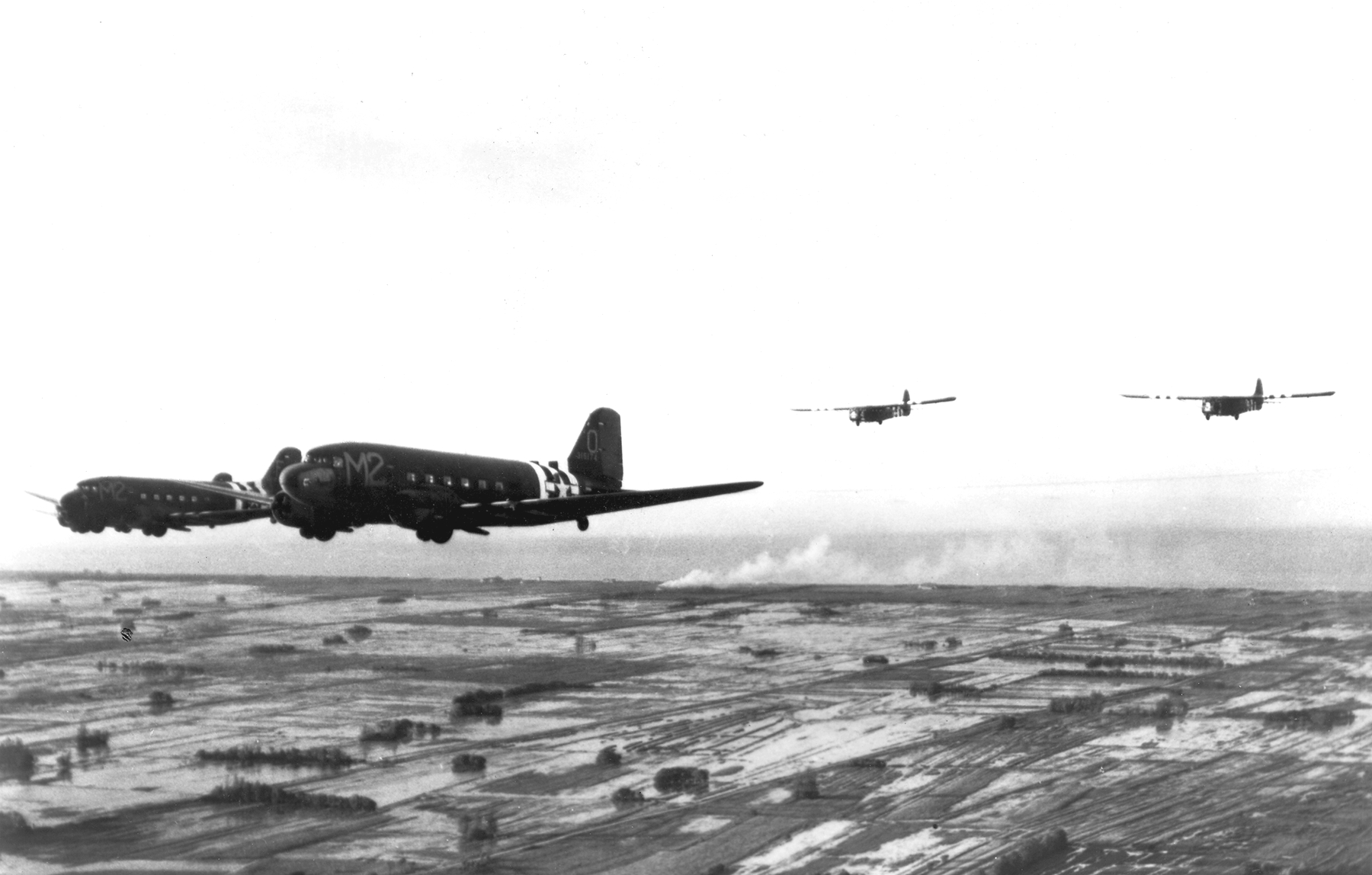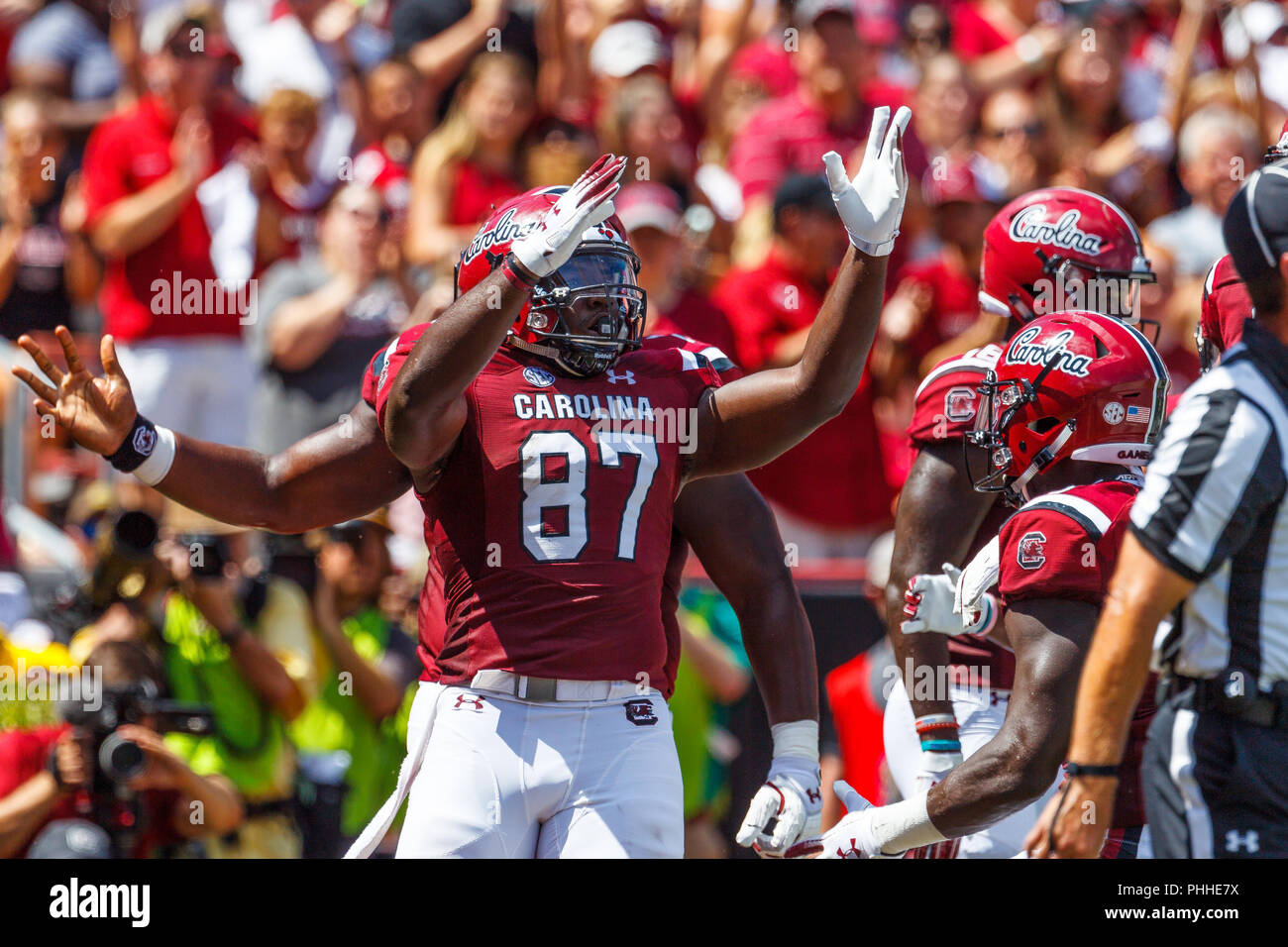Gamecock Fanatics
You are using an out of date browser. It may not display this or other websites correctly.
You should upgrade or use an alternative browser.
You should upgrade or use an alternative browser.
Countdown to Kickoff
- Thread starter Swayin
- Start date
USS Robinson, DD-88.
_at_Guantanamo_Bay,_Cuba,_in_January_1920.jpg/1280px-USS_Robinson_(DD-88)_at_Guantanamo_Bay,_Cuba,_in_January_1920.jpg)
_at_Guantanamo_Bay,_Cuba,_in_January_1920.jpg/1280px-USS_Robinson_(DD-88)_at_Guantanamo_Bay,_Cuba,_in_January_1920.jpg)
https://en.wikipedia.org/wiki/USS_Robinson_(DD-88)Construction and design
In 1916, the US Congress authorized a massive three-year shipbuilding program, with the aim of matching the largest navy in the world, the British Royal Navy. The program included 50 destroyers, which were to be built to a modified version of the Caldwell-class, designed to reach 35 knots (65 km/h; 40 mph) rather than the 30 knots (56 km/h; 35 mph) of the Caldwells. As such, the new design, the Wickes-class, had more powerful machinery with geared steam turbines, but retained the same flush-decked layout and armament used by the Caldwells. The Wickes were built to one of two detailed designs, one design by Bethlehem Steel, used by the two Bethlehem-owned shipyards, Union Iron Works and the Fore River Shipyard, while the design by Bath Iron Works was used by all other shipyards involved in the program.
Robinson was one of 20 destroyers ordered as the first stage of the construction plan, under the Fiscal year 1917 construction program. She was laid down at Union Iron Works' San Francisco yard on 31 October 1917, was launched on 28 March 1918 and commissioned at the Mare Island Naval Shipyard on 19 October 1918.
Service history
United States Navy
Robinson cleared San Francisco Bay 24 October 1918 for the east coast of the United States. Transiting the Panama Canal 3 November 1918, she set course by way of Guantanamo Bay for Norfolk, Virginia where she arrived on 8 November.
On 10 January 1919, Robinson put to sea from Norfolk to conduct winter training out of Guantanamo Bay, which ended at New York Harbor 14 April 1919. She then prepared for lifeguard duty supporting the first transatlantic flight from America to Europe to be attempted by Navy Seaplane Division Number 1.
Robinson got underway from Norfolk on 30 April, arrived at Halifax, Nova Scotia, 4 May 1919, and stood out toward the entrance of the harbor on the afternoon of 8 May. At 1944, she sighted the first of the Navy seaplanes, the NC-3, approach the harbor on the first leg of the transatlantic flight. Two days later, Robinson took station at sea to assist in guarding the flight of the two seaplanes to Trepassey Bay, Newfoundland, then returned to Halifax 11 May and got underway on 14 May to act as plane guard for seaplane NC-4 which had been delayed by repairs at Chatham Naval Air Station, and passed overhead at 1645, on 15 May, to join the other two seaplanes at Trepassey Bay.
After NC-4 faded from view, Robinson set course for station on the Azores route to be followed by the seaplanes from Trepassey Bay, 16 May 1919. These seaplanes would be guided on their 1,380-mile flight to the Azores, by Robinson and other destroyers who poured smoke from their funnels in daylight and fired star shells or turned on searchlights during the night. The first seaplane passed Robinson abeam an hour before midnight of 16 May 1919, and the two others also passed within the next 20 minutes.
The NC-4 covered the flight in 15 hours and 13 minutes setting down at Horta, the emergency stop in the Azores Islands. This seaplane had found its way above the dense fog which completely blinded the pilots of the others. An hour before the NC-4 landed, the NC-1 was forced to the water about 45 miles (72 km) off Flores Island and the NC-3 had also descended about 35 miles (56 km) from Fayal. The NC-1 sank in the heavy seas and Robinson joined in the search for the NC-3 which refused all assistance and finally taxied to Ponta Delgada under its own power.
Robinson anchored at Horta, Fayal Island, the afternoon of 19 May and stood out of the harbor the next morning to transport newspaper reports to Ponta Delgada where she arrived that afternoon. On 25 May 1919, she was en route to Station Number Seven (38°10′N 17°40′E) to cover the fourth leg of the transoceanic flight of the lone NC-4. She sighted the seaplane at 1330 on the afternoon of 26 May and the NC-4 faded from view on its way to a royal welcome by the Portuguese at Lisbon on 25 May and at Plymouth, England, on 31 May, terminating the historic 4,500-mile flight.
On 22 November 1919, Robinson stood out of New York Harbor, leading the second section of the honor detachment on the port quarter of HMS Renown, flying the standard of the Prince of Wales, in company with HMS Constance. She was relieved of her royal escort duty off Nantucket Shoals and returned to New York on 25 November. After a visit to Savannah, and voyage repairs in the Portsmouth Navy Yard, she cleared Boston Harbor on 14 January 1920 for fleet maneuvers off Guantanamo Bay and near the Panama Canal. She returned to New York on 1 May 1920 and entered the Portsmouth Navy Yard on 25 May 1920 for a year of inactivity. She shifted from the yard to Newport on 25 May 1921 for local operations until 10 October, and then visited New York before her arrival at Charleston, South Carolina, on 19 November 1921. After several months in local waters off Charleston, she entered the Philadelphia Navy Yard where she decommissioned 3 August 1922.
Robinson remained inactive until 23 August 1940 when she recommissioned for transfer to the British Government under terms of the destroyers-in-exchange-for-bases agreement. The transfer was effected at Halifax, Nova Scotia, on 26 November 1940 when Robinson was renamed HMS Newmarket (G47) and taken over by a care and maintenance party of the Royal Canadian Navy. She was commissioned in the Royal Navy on 5 December 1940, and struck from the U.S. Navy list 8 January 1941.
Last edited by a moderator:
USS Cape Esperance, CVE-88.
_underway_c1945.jpg/1280px-USS_Cape_Esperance_(CVE-88)_underway_c1945.jpg)

_transporting_aircraft_to_Korea_c1951.jpeg/1280px-USS_Cape_Esperance_(CVE-88)_transporting_aircraft_to_Korea_c1951.jpeg)
_underway_c1945.jpg/1280px-USS_Cape_Esperance_(CVE-88)_underway_c1945.jpg)
Service history
World War II
Upon being commissioned, Cape Esperance underwent a shakedown cruise down the West Coast to San Diego. She then underwent two transport missions, ferrying new aircraft to bases in the South and West Pacific, and returning to the West Coast with damaged aircraft. After returning from her second transport run, she was assigned to Task Group 30.8, the replenishment escort carrier group. She was loaded with replacement aircraft at San Francisco, and departed on 5 October 1944. She rendezvoused with the other replenishment carriers on 2 November, and provided replacement aircraft to the Fast Carrier Task Force operating against Japanese positions on Leyte and Luzon. The replenishment carriers would meet with the frontline carriers at designated rendezvous days, during which supplies and aircraft would be transferred. She was based from and received additional replacement aircraft at Ulithi and Guam.
The Third Fleet had been operating against positions on Luzon since 14 December, but its escorting destroyers ran low on fuel. As a result, the fleet retired to the east to refuel, and to receive replacement aircraft from Task Group 30.8. As a part of Task Unit 30.8.14, she rendezvoused with the Third Fleet about 300 mi (480 km; 260 nmi) east of Luzon early on 17 December. Cape Esperance was carrying thirty-nine planes on her flight deck, along with another twelve stored in her hangar deck. The location had been chosen because it lay out of range of Japanese fighters, but it also happened to lie within Typhoon Alley, where many Pacific tropical cyclones transited. As the escort carriers and the Third Fleet met, Typhoon Cobra began to bear down. At 01:00 in the night, fueling operations were attempted with the destroyers, although heavy winds and listing seas complicated the matter. At the same time, barometers on-board the ships began to drop, and tropical storm force winds were recorded.
As the weather continued to deteriorate, Admiral William Halsey Jr. ordered fueling operations suspended at 13:10, just after noon. He ordered his fleet to move to the next morning's planned rendezvous spot, approximately 160 mi (260 km; 140 nmi) northwest, and comfortably safe from the typhoon's impacts. Two hours later, he instead ordered his fleet to proceed due southwards, 180 mi (290 km; 160 nmi) from where the fleet was located. This brought the fleet directly into the typhoon's core. To make matters worse for the Third Fleet, Halsey ordered the fleet to proceed northwards at 22:20, putting the fleet in the quadrant of the typhoon with the highest winds. Blurry data and observations meant that command had little idea of where the typhoon actually was, with some weather maps pinning the typhoon's center some 100 mi (160 km; 87 nmi) away, even whilst the fleet sailed directly into the eye. Attached to the Third Fleet, Cape Esperance followed, although Captain Bockius had begun preparations on 17 December. The aircraft on the flight deck had been tied down, weight had been transferred downwards to lower the ship's center of gravity, the hatches had been battened down, and the crew had been informed to stay on the port side of the carrier to counteract any list in the ship. The ship's aircraft elevators had also been lowered, in the hopes that this transferred weight would negate the lists generated from the wind.
At 07:00, on the morning of 18 December, the fleet was inescapably trapped in the typhoon's path. Conflicting orders meant that some of the destroyers attempted to do some fueling during the morning, even as waves with an estimated height of 60 ft (18 m) pounded the task force. At 09:52, Cape Esperance began maneuvering independently of the task force. Multiple rolls of 36° were recorded, and the occasional roll of 39° frightened the ship's command. The ship's officers began discussing the possibility of jettisoning the aircraft on the flight deck to make the ship less top-heavy, before discarding the idea. The typhoon's winds solved the weight problem, by ripping the aircraft on the flight deck from their restraints, and carrying them into the ocean. However, at 12:28, an aircraft ended up stuck on the forward starboard stack, and caught on fire, forcing an evacuation of the bridge. Fortunately for the crew, as the carrier rocked and yawed, the plane was dislodged and carried overboard. The fire sparked by the aircraft, which had threatened to become a conflagration because of the aircraft's fuel tanks, ended up being extinguished by the rain.
The loss of most of the planes on the flight deck meant that Cape Esperance no longer threatened to keel over. At 16:00, another plane on the flight deck broke loose, and plummeted through the open forward aircraft elevator, landing on another plane. Fortunately for the crew, a fire did not result from this collision. As the carrier emerged from the typhoon, of the thirty-nine aircraft fastened to the flight deck, only seven remained. Although all of the planes in the hangar deck survived, eight planes were struck due to damage. As a result, she only had eleven replacement planes which she could deliver to the battered Third Fleet. Although 790 crewmen perished in the typhoon, none were from Cape Esperance. Her flight deck, damaged by the blaze, required major repairs.
Post-war and Cold War
Following the end of the war, she joined the Operation Magic Carpet fleet, which repatriated U.S. servicemen from around the Pacific. She first made a run from San Diego to Pearl Harbor, ferrying aircraft and veterans to San Francisco, where she arrived on 11 September 1945. Until mid-1946, she made several such Magic Carpet runs, touching stops throughout the Pacific. After being released from the Magic Carpet fleet, she proceeded to Bremerton, Washington, where she was decommissioned on 22 August 1946, and subsequently mothballed in the Pacific Reserve Fleet.
Cape Esperance was recommissioned on 5 August 1950 under the identification T-CVE-88, as an aircraft transport carrier serving under the Military Sealift Command. Most of her weapons were stripped from her hull, and she was operated by a mostly civilian crew. Immediately after being recommissioned, she began delivering aircraft to Japan, where they would participant in the Korean War. For the next nine years, Cape Esperance fulfilled a variety of duties, including supporting nuclear tests at Eniwetok, and ferrying aircraft to the Royal Thai Air Force. She engaged in an average of nine transpacific voyages per year, reinforcing forces of the Southeast Asia Treaty Organization, as well as U.S. assets in the Pacific. In 1952, she steamed for Hong Kong, where she evacuated planes of the Republic of China Air Force which were in danger of being seized by advancing PLA forces. She was reclassified as a utility aircraft transport carrier, T-CVU-88, on 12 June 1955, and began conducting transatlantic voyages, ferrying aircraft to bases in Western Europe. She then returned to the Pacific, and proceeded to transport aircraft to Pakistan in 1956.
She was decommissioned a second time on 15 January 1959, as the operation of Casablanca-class escort carriers became less and less economical. She was abandoned in favor of Bogue-class escort carriers, who served for another decade as transport carriers, before they too became obsolete and uneconomical. She was sold for scrapping on 14 May 1959, and ultimately broken up in Japan throughout January 1961.

_transporting_aircraft_to_Korea_c1951.jpeg/1280px-USS_Cape_Esperance_(CVE-88)_transporting_aircraft_to_Korea_c1951.jpeg)
Last edited by a moderator:
USS Preble, DDG-88.
_after_refueling.jpg/1280px-US_Navy_110313-N-5503T-166_An_HH-60H_Sea_Hawk_helicopter_lifts_off_from_the_guided-missile_destroyer_USS_Preble_(DDG_88)_after_refueling.jpg)
_after_refueling.jpg/1280px-US_Navy_110313-N-5503T-166_An_HH-60H_Sea_Hawk_helicopter_lifts_off_from_the_guided-missile_destroyer_USS_Preble_(DDG_88)_after_refueling.jpg)
https://en.wikipedia.org/wiki/USS_Preble_(DDG-88)USS Preble (DDG-88) is an Arleigh Burke-class destroyer in the United States Navy. She is the sixth U.S. Navy ship named in honor of Commodore Edward Preble, who served in the American Revolutionary War and was one of the early leaders of the Navy.
http://www.navsource.org/archives/05/01088.htmIn the American Revolution Edward Preble ran away from home to serve on a privateer, entered (1779) the Massachusetts state marine as a midshipman, and saw service aboard the Protector, which was captured in 1781. After his release he joined the Winthrop and, when the Revolution was over, was engaged in the merchant service.
Commissioned lieutenant in the U.S. navy in 1798, he was promoted (1799) to captain and given command of the Essex, which sailed to China and convoyed 14 merchant vessels to New York. In 1803, Preble was transferred to the Constitution and set out in command of a squadron for the Mediterranean, where he took a leading part in the Tripolitan War.
After the Philadelphia of his squadron had been captured and held in the harbor of Tripoli, Preble blockaded that port and made a number of attacks, but he failed to capture the strongly fortified town. He was relieved of his command on the arrival of Commodore Samuel Barron. Many of those who served under Preble, such as David Porter and Stephen Decatur, rendered distinguished service in the War of 1812.
The 88th Troop Carrier Squadron.


https://en.wikipedia.org/wiki/88th_Fighter-Bomber_SquadronActivated in June 1943 under I Troop Carrier Command and equipped with C-47 Skytrains. Trained in various parts of the eastern United States until the end of 1943. Deployed to England and assigned to IX Troop Carrier Command, Ninth Air Force.
Prepared for the invasion of Nazi-occupied Europe. On 5 June 1944, the squadron took off for assigned drop zones in Occupied France, commencing at 23:48 hours. Despite radio black-out, overloaded aircraft, low cloud cover and lack of marked drop zones, they carried parachute infantry of the 101st Airborne Division's 502d Parachute Infantry Regiment, who were dropped soon after midnight in the area northwest of Carentan. Glider-borne reinforcement missions followed, carrying weapons, ammunition, rations, and other supplies.
On 20 July departed for Canino airbase in Italy in preparation for the August invasion of Southern France, Operation Dragoon. In the invasion, dropped paratroops and towed gliders that carried reinforcements.
During Operation Market Garden in September 1944, the group released gliders carrying troops and equipment for the airborne attack in the occupied Netherlands. Re-supply missions were flown on 20 September and on the 21st to Overasselt and on the 21st to Son.
During the Battle of the Bulge (December 1944 – January 1945), flew air supply missions to battle areas, including the first two flights into beleaguered Bastogne, re-supplying the 101st Airborne Division.
After moving to France in February 1945, flying combat operations from rough Resupply and Evacuation airfields carrying supplies and ammunition to front line forces, evacuating wounded personnel to rear-zone hospitals. The unit released gliders in support of an American crossing of the Rhine River called Operation Varsity in March 1945.
After V-E Day, the unit evacuated prisoners of war and displaced persons to relocation centers. Returned to the United States in August 1945, until demobilizing. Inactivated as an administrative unit in September 1945.
Homebrewcock
GCF Top Poster
Homebrewcock
GCF Top Poster
Kicker - Thomas Hooper (I kind of remember him).


.
Last edited by a moderator:
Homebrewcock
GCF Top Poster

Last edited by a moderator:
Homebrewcock
GCF Top Poster
Homebrewcock
GCF Top Poster
Homebrewcock
GCF Top Poster
USS McKee, DD-87.
_underway_at_sea,_circa_in_1921_(80-G-651932).jpg)
_underway_at_sea,_circa_in_1921_(80-G-651932).jpg)
USS Steamer Bay, CVE-87.

USS Mason, DDG-87.
_steams_through_the_Atlantic_Ocean.jpg/1280px-US_Navy_080729-N-3392P-025_The_guided-missile_destroyer_USS_Mason_(DDG_87)_steams_through_the_Atlantic_Ocean.jpg)
_steams_through_the_Atlantic_Ocean.jpg/1280px-US_Navy_080729-N-3392P-025_The_guided-missile_destroyer_USS_Mason_(DDG_87)_steams_through_the_Atlantic_Ocean.jpg)
The 87th Fighter Squadron flew P-40s against Rommel's Afrika Corps in North Africa from 1942-44. The squadron insignia is on the nose art of the P-40 in the picture.

https://usaac-official.tumblr.com/post/650084192646004736/lt-charles-jaslow-of-the-87th-fighter-squadron

https://usaac-official.tumblr.com/post/650084192646004736/lt-charles-jaslow-of-the-87th-fighter-squadron
Last edited by a moderator:

:no_upscale()/cdn.vox-cdn.com/uploads/chorus_asset/file/6474101/Weslye-Saunders.jpg)







